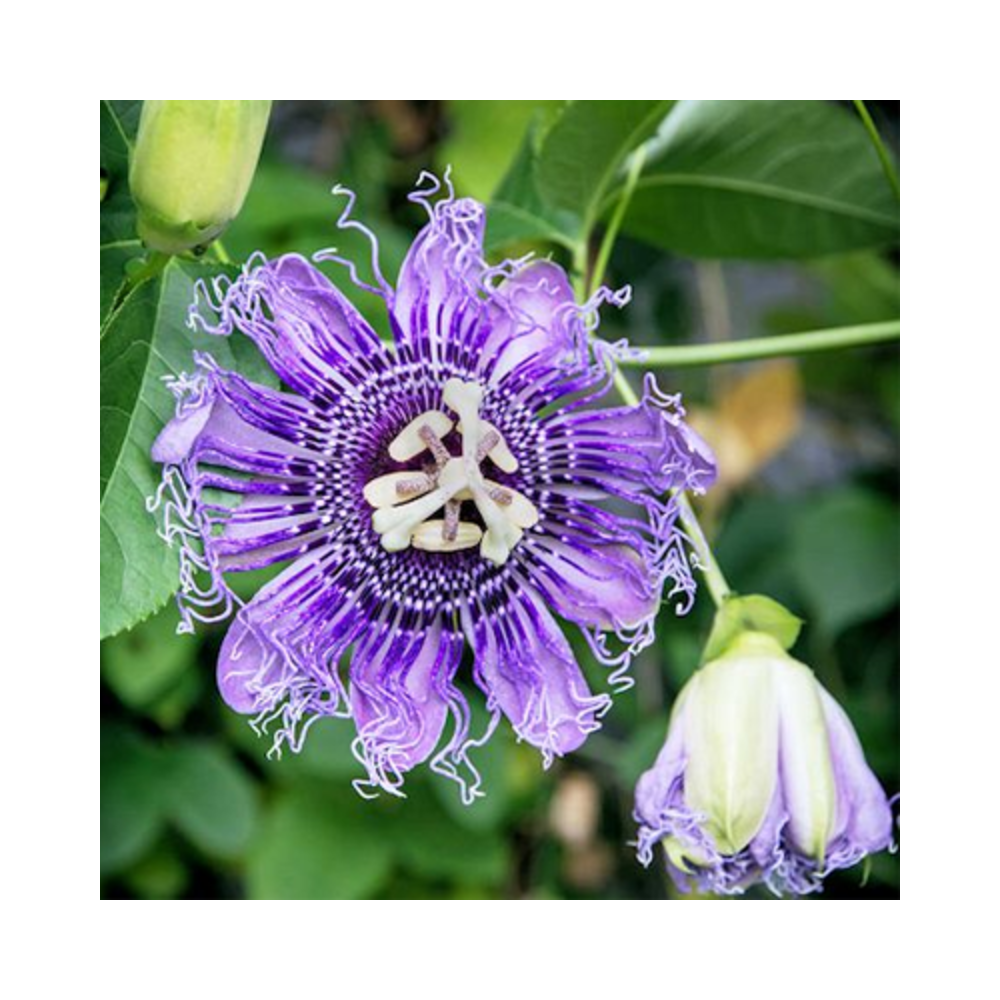



Passiflora Also known as maypop, passionflower (Passiflora incarnata) is a climbing vine valued for its intricate purple and white blooms and sweet fruit. Passionflower vines come in several varieties, including "Lady Margaret" with big, red flowers; "Blue Bouquet," which is distinguished by blue and white blooms; and "Citrina," which displays small, bright yellowflowers. Passionflower is suitable for growing in U.S. Department of Agriculture plant hardiness zones 6 through 10.

Security policy visit http://nurserynature.com/content/10-security-policy

Shipping & Delivery Policy visit http://nurserynature.com/content/1-delivery

Cancellation & Refund Policy visit http://nurserynature.com/content/6-aeu-legal-revocation-terms
Passiflora Also known as maypop, passionflower (Passiflora incarnata) is a climbing vine valued for its intricate purple and white blooms and sweet fruit. Passionflower vines come in several varieties, including "Lady Margaret" with big, red flowers; "Blue Bouquet," which is distinguished by blue and white blooms; and "Citrina," which displays small, bright yellowflowers. Passionflower is suitable for growing in U.S. Department of Agriculture plant hardiness zones 6 through 10.
Passiflora Planting & Care
Water
Passionflower vines should be given a deep watering immediately after planting, as a good soaking gets the roots off to a healthy beginning. Thereafter, passionflower thrives with one or two deep waterings per week throughout the growing season, providing about 1 to 1 1/2 inch of water every week without rain. Passionflower generally requires no irrigation during the winter months but benefits from an occasional light watering in dry climates.
Fertilizer
Because passionflower vines are heavy feeders, they benefit from regular application of a balanced, general-purpose fertilizer with similar proportions of nitrogen, phosphorus and potassium. The best type of fertilizer for passionflower is marked with low numbers such as 5-7-5, 4-4-4 or 6-6-6, as higher numbers may damage the plant. To feed passionflower, fertilize the plant before new growth emerges in early spring, and then repeat every four to six weeks until early autumn. Use a light application according to the specifications on the label.
Support
Passionflower is a rambunctious climber with graceful but sturdy tendrils that wrap around anything they touch. The vine serves as an effective camouflage when planted where it can climb up an unsightly fence. Alternatively, provide an arbor, trellis or any sturdy support where the vine can freely climb toward the sunlight. With sturdy wires, the vine can even wander up a bare concrete wall or other flat surface.
Maintenance
While these vines generally require no pruning for at least three years, mature plants often need pruning to keep them from climbing over and possibly smothering shrubs or trees. To prune the vine, remove dead and damaged growth and trim the plant down to vigorous, healthy growth in autumn or early spring. Passionflower also benefits from a 2- to 3-inch layer of mulch such as chopped leaves or shredded bark to keep the roots cool and moist.